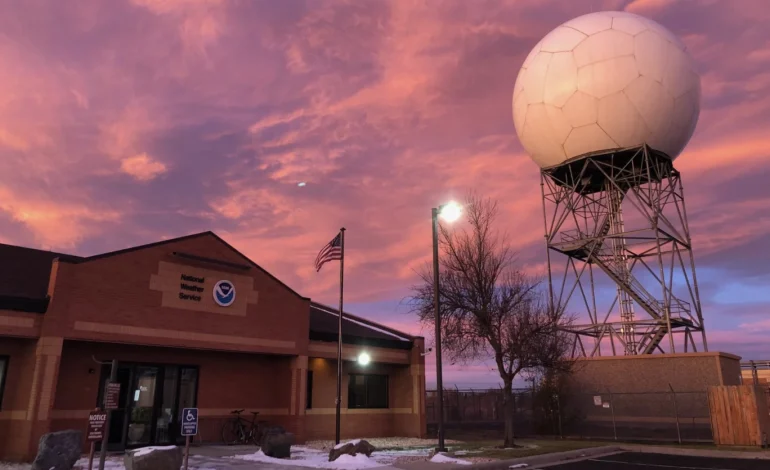As spring brings an uptick in severe weather across the US, the National Weather Service (NWS) office in Cheyenne, Wyoming, has temporarily halted overnight operations due to staffing shortages, Wyoming Public Media reports.
The office, which typically operates 24/7, is now closing from 11 p.m. to 6 a.m., reflecting a broader strain on NWS resources nationwide.
The Cheyenne office is currently operating with nearly half its normal staffing levels, a result of a federal hiring freeze and recent funding cuts. While this change represents a departure from the agency’s decades-long practice of maintaining continuous operations, officials say the public will still receive critical weather alerts.
“Services to the American public [are] not going to be ignored,” said Tom Fahy, legislative director of the National Weather Service Employees Organization.
He noted that nearby offices in Riverton, Wyoming, and Denver, Colorado, will assist by issuing overnight alerts and warnings. However, Fahy expressed concern that this redistribution of responsibilities could further stretch already overextended staff.
“More communities will be in harm’s way if we’re not able to hire more meteorologists, to get people into the system,” Fahy said, emphasizing the physical and mental toll long shifts can take on remaining staff.
The situation in Cheyenne mirrors a trend across several other states. Fahy said weather offices in Kansas, Alaska, California, Kentucky, and Michigan have also curtailed overnight operations. He characterized the response—temporarily transferring 155 staff to understaffed offices nationwide—as a “Band-Aid solution,” pointing out that the agency has lost around 600 workers in the past 90 days, the same number it lost over the previous 15 years combined.
In response, the National Oceanic and Atmospheric Administration (NOAA), which oversees the NWS, acknowledged the challenges but stressed that essential services are being maintained.
“The weather service continues to meet its core mission of providing life-saving forecasts, warnings, and decision support services,” said Kim Doster, NOAA’s communications director.
She added that service standards have been updated to reflect current staffing realities while still prioritizing mission-critical operations.
One notable impact of the staffing shortage earlier this year was a reduction in weather balloon launches, which are key to collecting data on lower-atmosphere conditions where severe storms form. In March, launches in Wyoming were cut to once daily and suspended entirely in parts of South Dakota. However, recent staffing adjustments have allowed twice-daily balloon launches in Wyoming to resume.
Despite advancements in satellite technology, weather balloons remain essential for tracking atmospheric changes below 10,000 feet.
“This is critical, very potentially life-saving information,” said retired Colorado meteorologist Mike Nelson.
Offices like the one in Grand Junction, Colorado, continue to operate with reduced balloon flights, but officials expect full service to resume by late July with the addition of temporary staff. In the meantime, meteorologists are prioritizing forecasts related to severe weather, wildfires, and aviation.








The latest news in your social feeds
Subscribe to our social media platforms to stay tuned